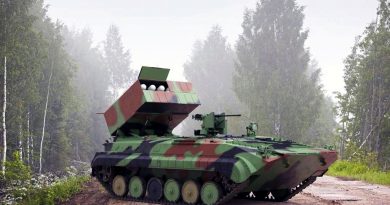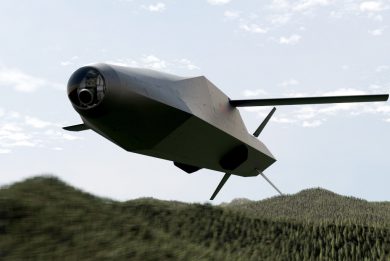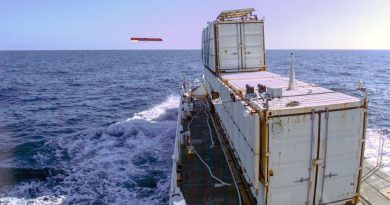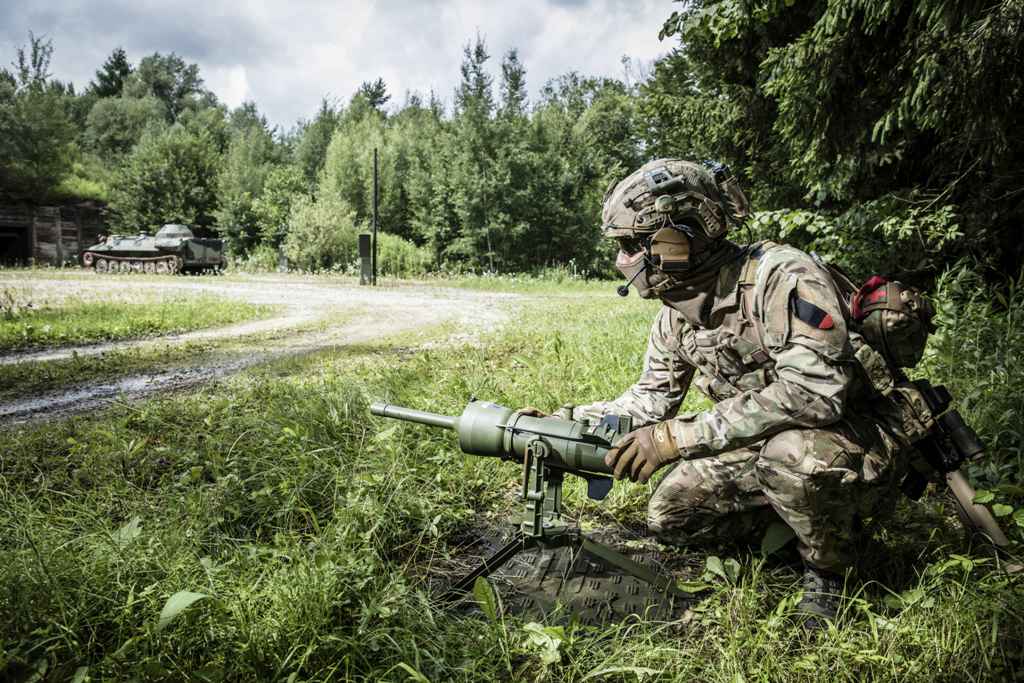
TDW: the tank is back, PARM is back
Developed in the early 1980s in the midst of the Cold War, when the threat of Soviet Operational Manoeuvre Groups was dominant, the PARM, the German acronym for PanzerAbwehrRichtMinen, antitank directional mine in English, is back on the scene, the Bundeswehr having recently signed an order for such ordnance
Minefields have always been, are and probably will always be a nightmare for armoured vehicles. The numerous videos published on-line of tanks and other vehicles being blown up by such weapons. Usually those used are classic antitank mines, which are buried under a thin layer of soil and are activated by the tank pressure when the track gets over the mine. However other mines have been developed in the past to counter the armour threat, to be used to hit the side of the armoured target, a sensor activating it when the vehicle was passing by. Usually employed along choke pints, where tanks and infantry fighting vehicles are obliged to follow a predictable route, these usually consist in a sensor that activates the effector, the equivalent to Claymore mines for vehicles.
Originally developed by the Messerschmitt-Bölkow-Blohm (MBB), it was accepted into service by the German Army in 1988 as DM12 PARM, the service acquiring some 25,000 such mines between 1991 and 1994. To cope with the so-called Ottawa Convention, these were updated o the DM22 standard by adding an automated system that makes the PARM inert after 40 days of operation.
The PARM became part of the TDW portfolio, this company being formed in 1994 after a series of merging and name changing, and is an MBDA subsidiary since 2006. Specialised in warheads it is based in Schrobenhausen, some 50 km north of Munich.
TDW stopped producing and modifying PARMs at least 10 years ago, but now the system is due to come back on the MBD Germany premises assembly lines, following the contract signed by the Berman Ministry of Defence on 18October 2023, which calls for the production of 2,600 PARM with an option for 10,000 more.
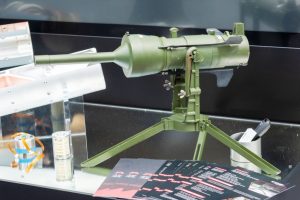
The system required by the German Army is still the DM22 PARM, which mass is less than 10 kg, is triggered by a optical cable in which signal is travelling back and forth the ignition of the munition happening when the cable is broken and no backward signal reaches the arm and fusing device. The DM22 is divided in two parts, the tripod on which the static part of the weapon, the battery, the aforementioned arm and fusing device as well as the launch tube are installed, and the. The latter is ejected from the tube by a propelling charge and has a very limited range as the optic cable is 40 metres long, and is fitted with a single shaped charge warhead with a 128 mm calibre and an explosive weight of 1.4 kg, which ensures a perforation of 600 mm rolled homogeneous armour.
Easy to deploy, the arming device can be deactivated should the mine be moved to a different location, ensuring transport in safe condition. The PARM is deployed in so that the cable should be crossed by the vehicle with the mine being launched at around 90°, which coupled to the tripod height means the targeted area is mainly that of tracks, which is the main reason why a single shaped charge is considered sufficient for a kill.
As said the German Army ordered a new batch of DM22 PARM. TDW is now starting rebuilding the production line and ordering long lead items from subcontractors, the start of the production qualification batch being planned for 2025, with serial production starting in 2026, first deliveries being planned for 2027, this timeframe being considered the shorter possible by the company.
In parallel with the work leading to serial production, TDW will develop a series of upgrades that might lead to a wholly new weapon, a DMXX so to speak. The current optical cable should be replaced by a series of different sensors which may include acoustic, vibration, infrared and other types of sensors. These may allow identifying the type of target considerably increasing the system capacity, although it may alter the system cost-effectiveness, the current PARM being considered a relatively low-cost weapon. A networking capacity might also be added, allowing the creation of a “smart minefield” where information are shared among the mines as well as providing a global picture to an operator, a man in the loop capacity being also considered, as well as a remote arming/dearming capability. According to TDW representatives current DM22s might be upgraded with all or part of those capabilities, thanks to the modular conception of the PARM. What should not change is the shaped charge, the DMXX remaining a weapon designed to hit the side of an armoured vehicle in its lower section, very few vehicles having track protections of the reactive type. As for active protection systems, not many are able to cope with a threat being launched at such short distance.
TDW will start the full development of the next generation PARM when a launch customer will show up, time to market being defined as “a small number of years”.
Although TDW declined commenting the use of the DM22 in Ukraine, it is known that in spring 2023 Berlin shipped 1,600 such mines to Ukraine as part of a wider weapon package that included other anti-armour systems. The new order, which is worth around 68 million Euro, will therefore not only reconstitute the German Army stocks but even increase it.
Photos courtesy TDW/MBDA Germany

